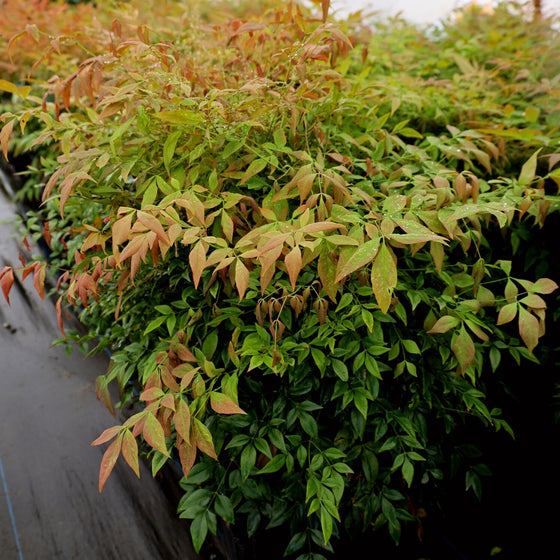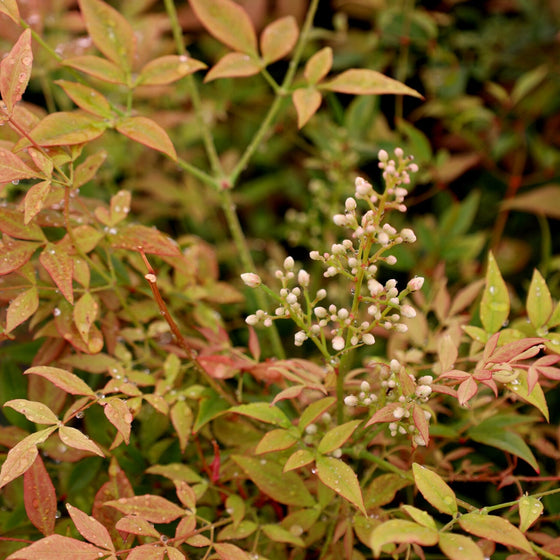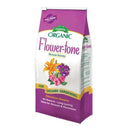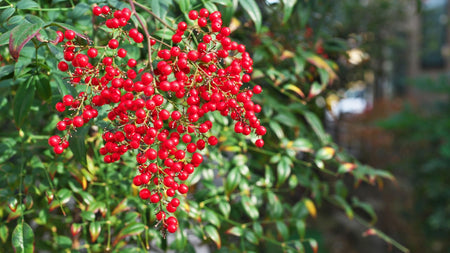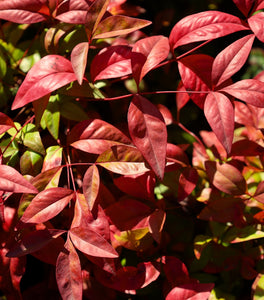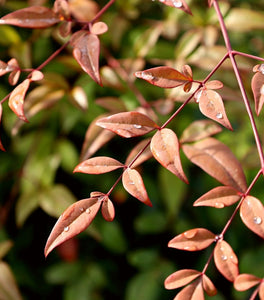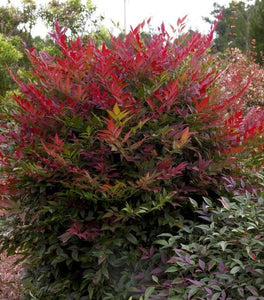
Images Depict Mature Plants
Nandina Gulf Stream for Sale Online
Nandina Gulf Stream (Nandina domestica 'Gulf Stream') is a compact, evergreen shrub celebrated for its rich, changing foliage that brings vibrant color to any garden throughout the year. The new growth emerges in shades of bronze and copper, maturing into a deep blue-green, and in the fall, the leaves turn a stunning fiery red, creating a dramatic seasonal display. Reaching a mature height and spread of 3 to 4 feet, Gulf Stream Nandina is perfect for foundation planting, in mixed borders, or as an accent plant. Its dense growth habit makes it ideal for creating low hedges or adding structure and texture to the landscape. With its changing foliage and low-maintenance needs, Gulf Stream Nandina adds lasting interest to any garden.
Nandina Gulf Stream thrives in full sun to partial shade and is adaptable to a wide range of soil types, provided the soil is well-drained. Once established, it is heat and drought-tolerant, making it an excellent choice for gardens with challenging conditions or inconsistent rainfall. Unlike some other nandina varieties, Gulf Stream is berry-free, which makes it a safe option for gardens where children or pets may be present. Its non-invasive nature also ensures that it stays in its designated space, making it easy to maintain in formal or informal garden settings. The vibrant foliage, ranging from bronze to green to red, adds a unique and captivating element to garden beds and borders.
With its year-round color, Nandina Gulf Stream offers a versatile solution for those looking to add a striking, low-maintenance shrub to their landscape. This nandina's dense, compact form makes it perfect for both small and large gardens, providing a reliable background plant or a standalone focal point that draws attention with its dynamic seasonal foliage. Its deer-resistant properties add to its appeal, ensuring the shrub remains beautiful and undamaged even in areas with frequent wildlife. Whether used in mass plantings, as a low hedge, or in containers, Nandina Gulf Stream offers a beautiful blend of color and texture that enhances the beauty and diversity of any garden year-round.

| Hardiness Zone: | 6-11 |
|---|---|
| Mature Height: | 2.5 to 3 feet |
| Mature Width: | 3 feet |
| Classification: | Dwarf, Compact,Broad leaved evergreen shrub |
| Sunlight: | Full Sun to Part Shade |
| Habit: | large mounding |
| Foliage: | Scarlet red new growth, changing to blue-green |
| Flower Color: | White |
| Pruning Season: | Pruning not needed |
| Soil Condition: | Any well drained soil |
| Water Requirements: | Water well until established |
| Uses: | Extremely attractive when used as in the mixed border, or containers |
How to Care for Nandina Gulf Stream
Before you purchase your Nandina Gulf Stream, be sure to read the recommended care instructions to ensure your plant remains happy and healthy for years to come!
How Do I Plant My Nandina Gulf Stream?
To plant Nandina Gulf Stream, start by selecting a suitable location that offers full sun to partial shade and well-drained soil. Gulf Stream Nandina is adaptable to various soil types, including sandy and clay soils, as long as they drain well. Begin by digging a hole that is twice as wide and as deep as the root ball, providing enough space for the roots to spread comfortably. Place the shrub in the hole, ensuring that the top of the root ball is level with the surrounding ground. Backfill with the original soil, gently firming it around the roots to eliminate any air pockets, and then water thoroughly to help settle the soil and promote root-to-soil contact, which is essential for establishing a healthy shrub. Once you have planted your Nandina Gulf Stream, apply a 2-3 inch layer of organic mulch around the base of the shrub to help retain moisture, regulate soil temperature, and suppress weed growth. Be careful to keep the mulch a few inches away from the trunk to prevent rot. If you are planting multiple Gulf Stream Nandinas to create a low hedge or border, space them 3 to 4 feet apart to ensure proper growth and air circulation, allowing the shrubs to fill in and form a dense, colorful display. Water regularly during the first growing season to keep the soil evenly moist, especially during dry periods, to support root establishment. With the right care and conditions, your Nandina Gulf Stream will thrive, showcasing its rich, ever-changing foliage and adding year-round beauty to your landscape.
How do I water Nandina Gulf Stream?
To properly water Nandina Gulf Stream, it is crucial to keep the soil consistently moist, especially during the first year after planting, as this is when the shrub is establishing its root system. Water deeply once or twice a week, depending on the weather and soil conditions, ensuring that the water reaches the root zone. A slow, thorough watering technique, such as using a soaker hose, is ideal to allow moisture to penetrate deeply into the soil, which encourages strong root growth. During hot and dry periods, increase the frequency of watering to prevent the soil from drying out completely, as Nandina Gulf Stream prefers well-drained, evenly moist conditions to thrive. Once your Nandina Gulf Stream is established, it will become more drought-tolerant but will still benefit from regular watering during extended dry spells, especially during the hot summer months. The key is to check the top few inches of soil—if they feel dry, it's time to water. Applying a 2-3 inch layer of organic mulch around the base of the shrub will help retain moisture, regulate soil temperature, and minimize evaporation, ensuring your nandina remains healthy and vibrant. Be sure to keep the mulch a few inches away from the trunk to prevent any risk of rot. With consistent watering, especially during the early stages, your Gulf Stream Nandina will grow strong and display its beautiful seasonal foliage, adding year-round interest to your garden.
How do I fertilize Nandina Gulf Stream?
To fertilize Nandina Gulf Stream, apply a balanced, slow-release fertilizer, such as 10-10-10, in early spring before new growth begins. This provides the essential nutrients needed for lush foliage and vibrant seasonal color throughout the year. Spread the fertilizer evenly around the base of the plant, extending out to the drip line, which is where the roots actively absorb nutrients. Make sure to avoid applying fertilizer directly against the trunk to prevent root burn. Once you’ve applied the fertilizer, water thoroughly to help the nutrients penetrate the soil and reach the root system effectively. This will promote healthy growth and enhance the colorful foliage that Nandina Gulf Stream is known for. For optimal growth, it’s also beneficial to amend the soil with organic matter, such as compost or aged manure, which provides a slow, steady release of nutrients and helps improve soil structure. You can mix organic matter into the soil around the base of the shrub to enhance nutrient uptake and promote better drainage. Testing the soil pH can be useful, as Nandina Gulf Stream prefers slightly acidic to neutral soil, ideally between 6.0 and 7.0. Adjusting the pH with sulfur or lime if necessary will help create the best environment for nutrient absorption. Avoid over-fertilizing, as this can lead to excessive leafy growth at the expense of the beautiful bronze and red tones that make Gulf Stream Nandina so unique. With proper fertilization, your Gulf Stream Nandina will thrive, providing a vibrant display of changing foliage year-round.

How do I prune Nandina Gulf Stream?
To prune Nandina Gulf Stream, it is best to do so in late winter or early spring before new growth begins. Start by removing any dead, damaged, or diseased branches to maintain the health and appearance of the shrub. This ensures that fresh, healthy growth can emerge unimpeded. If the plant has become too dense, selectively thin out some of the older, woodier stems by cutting them back to ground level. This encourages new shoots from the base, keeping the Nandina Gulf Stream lush and promoting its vibrant seasonal color display. Using clean, sharp pruning shears will ensure smooth cuts that promote faster healing and reduce the risk of infection. To maintain the size and shape of your Nandina Gulf Stream, lightly trim back the taller stems, especially if the shrub is being used as part of a low hedge or border. Avoid shearing the plant, as this can lead to an unnatural appearance and reduce its distinctive foliage color and texture. Instead, selectively trim individual branches to maintain a naturally full form. Pruning in this way will not only keep the shrub looking neat and compact but will also help encourage more vibrant bronze and red foliage throughout the growing season. With proper pruning techniques, your Gulf Stream Nandina will maintain its dense, attractive shape and provide year-round interest with its colorful foliage and minimal maintenance needs.

